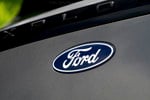Mazda has published new details about its next-generation powertrain technologies with the name SKYACTIV.
These include new engines, transmissions, bodyshells and platforms that will be launched in 2011 offering major reductions in fuel consumption and CO2 emissions for all Mazda models.
This process will initially concentrate on lightweight construction, along with improving conventional powertrain technologies.
In further phases, efficiency improving technologies, such as regenerative brake systems and hybrid power systems, will be introduced.
Mazda's goal is to lower the fuel consumption of its global fleet by 30% by 2015.
> Mazda's SKYACTIV-G petrol engine, for instance, will achieve fuel consumption levels (without the use of electric components) that until now have been the reserve of hybrid powertrains.
This high-efficiency direct-injection petrol engine will use 15% less fuel and also contributes to a 15% increase in torque.
Higher torque at low and mid-range engine speeds means better driveability with less fuel consumption in everyday driving.
> The new SKYACTIV-D diesel engine offers a drop in fuel consumption of 20% and especially clean combustion.
Without expensive after-treatment to reduce NOx, the new Mazda SKYACTIV-D engine will meet future Euro VI emission standards. A two-phase turbocharger increases low and high-end torque up to the rev limit of 5,200 rpm.
> Mazda has developed a new SKYACTIV-Drive automatic transmission that combines the advantages of a conventional automatic transmission, a continuously-variable transmission and a double-clutch transmission.
The new SKYACTIV-Drive delivers improved fuel economy of up to 7% compared to a current, conventional torque-converter automatic transmission.
> The new SKYACTIV-MT is an especially lightweight and compact manual transmission with reduced internal friction that contributes to lowering fuel consumption.














Login to comment
Comments
No comments have been made yet.